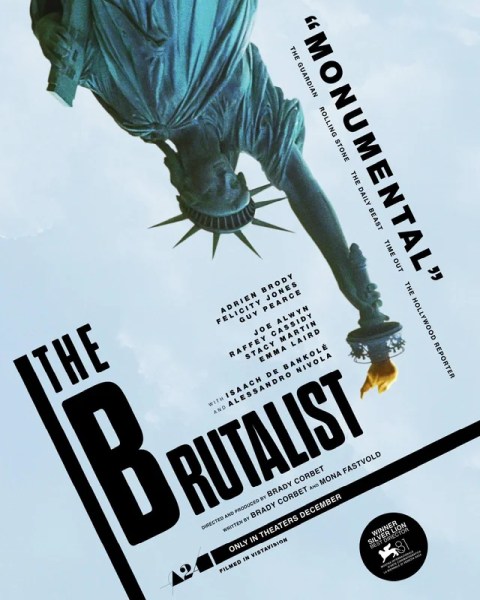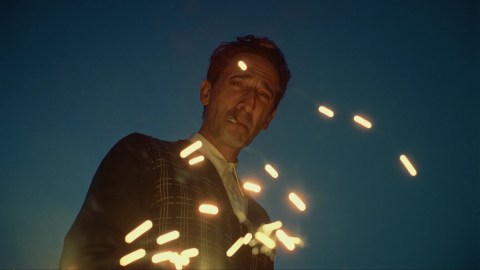17. 4. – 19. 4. 2026
The Brutalist

 Original title: The Brutalist
Original title: The BrutalistDirector: Brady Corbet
Production: 2024, USA
Length: 200 min. + intermission
Screened:
KRRR! 2025: 70mm 1.66:1, Colours intact, DTS, Spoken language: English, Hungarian, Subtitles: Czech, EnglishAnnotation for KRRR! 2025
Although Brady Corbett’s complex, nearly four-hour historical drama won Oscars for best music, cinematography and performance by an actor in a leading role, it sadly missed out on a nomination for best production design. Sadly, because the production design is an important part of Brutalist’s narrative, reflecting the nature of the protagonist’s life’s ups and downs – and since much has been written about the film itself in recent months, we’ll focus mainly on it. The difficult story of Jewish architect László Tóth (Adrien Brody) begins when he arrives in the United States after World War II. He hopes to leave his harrowing experience in a concentration camp behind him and find a better life. But as the upside-down shots of the Statue of Liberty suggest, the American dream soon turns into a nightmare. Brutalist is primarily a film about various forms of lack of freedom, which stems from the hero's social status, the capriciousness of his unstable patron, his dependence on someone's kindness or his addiction to addictive substances. The film is divided into several plot arcs that show Tóth's struggle with various forms of restriction and oppression, often taking place through one of the main themes of the film - architecture. Above all, the architectural elements of the mise-en-scène as a staged space in front of the camera speak of lack of freedom and the nature of Tóth's situations, when Tóth's life alternately improves or worsens depending on how it is shown in space and at the same time how he treats the space or decides to shape it. This applies to the first shots of the interior of the transport ship. Narrow, dark, unclear and filmed with a rotating, restless camera, which makes it even more difficult for the viewer to orient themselves in such a space – and just like Tóth, he tries to escape from it. However, this also applies to his first American commission, and especially to a large project whose construction reflects Tóth’s character growth.
The space is also staged to reflect his situation. Tóth’s first American dwelling, which is a large makeshift, can be understood as a hint of the problems with his initially friendly hosts. The monumental scaffolding of the giant building, where he works as a laborer for a while, shows us how small a part of the world he has become. The dark labyrinth of Italian cave passages then becomes the scene of one of his greatest traumas. The construction of the film space reflects the hero’s dependence on other characters, the weight of his social status and the impossibility of escaping from a difficult situation. Architecture is as important an element to the film as its characters, and the way it reflects the protagonist's predicament and psyche is fully revealed in the conclusion itself.
Space is also used in the film to create the atmosphere of the moment. The narrative consists of episodes that frame a shorter or longer period of time, and these are in turn set in a certain territorial unit. The environment where they take place not only reflects Tóth's mood, but also completes the entire subworld of the other characters with whom the protagonist can interact. Each episode represents a stage reduced to a moment with a certain atmosphere and a certain defined space that defines the hero's situation and the mood into which it introduces the viewer. Because the film tells the story at a slow pace, it helps the viewer to become present in the moment in question and let the environment take over the role of narrator.